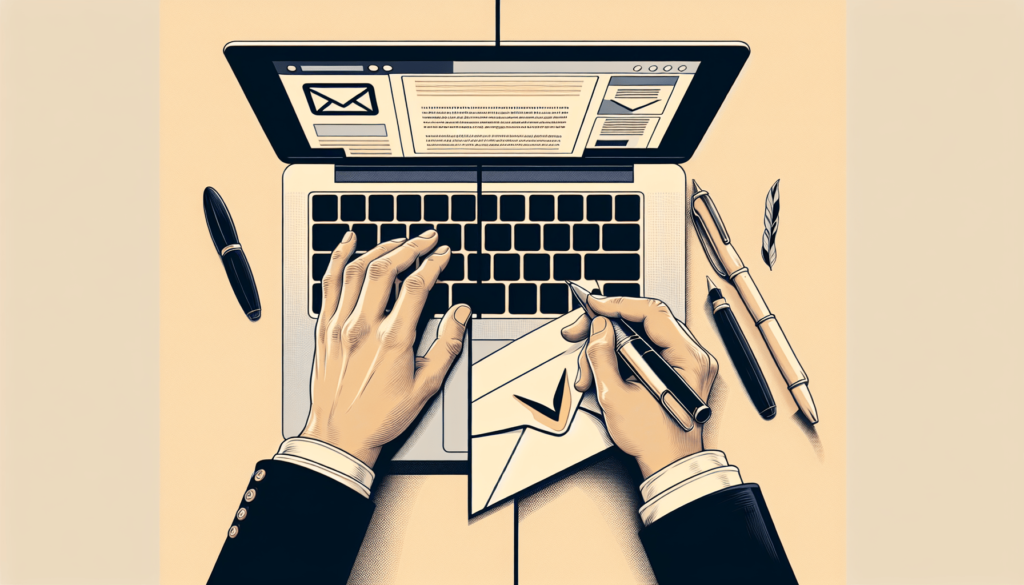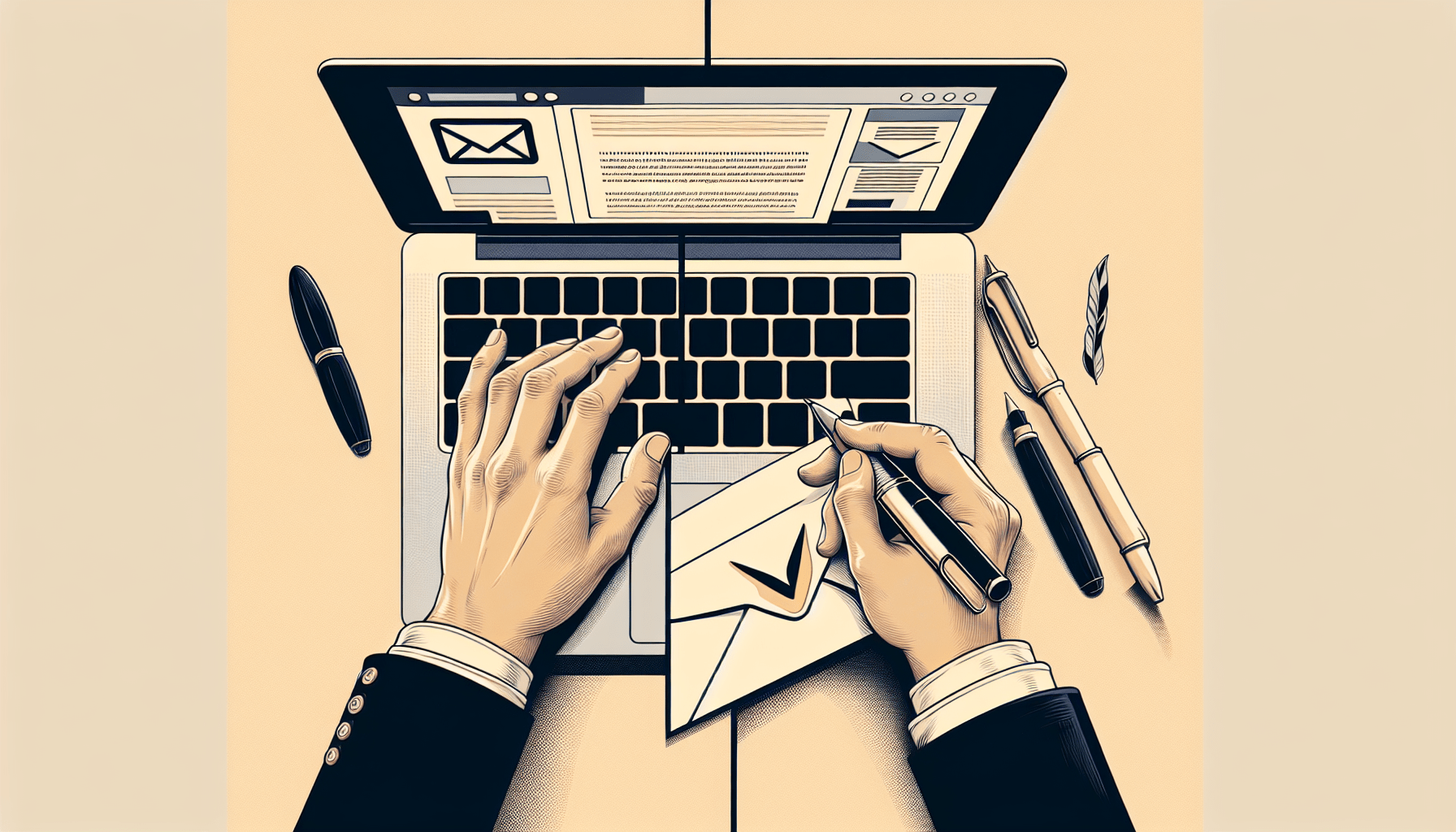If you want to boost your email marketing campaigns and increase conversions, it all starts with the power of persuasive copy. Crafting engaging and impactful emails can be the key to driving sales and building strong relationships with your subscribers. In this article, you will discover effective strategies and tips on how to write copy that sells in email marketing. From creating attention-grabbing subject lines to understanding the psychology of your audience, you will learn valuable techniques that will help you create compelling emails that drive results. Get ready to take your email marketing to the next level and watch your sales soar.
Understanding Your Audience
Identify your target audience
Before you start crafting your email copy, it’s essential to identify and understand your target audience. Who are they? What are their demographics, interests, and preferences? By having a clear picture of your ideal customer, you can tailor your message to resonate with them effectively.
Research their needs and pain points
To write persuasive copy, you need to understand your audience’s needs and pain points. What problems are they facing? What challenges do they want to overcome? Conduct market research, surveys, and engage with your audience on social media to gather insights. This information will help you tailor your message to address their specific pain points.
Segment your email list
Segmenting your email list allows you to send targeted messages to specific groups of subscribers. By dividing your audience based on demographics, interests, past purchases, or engagement levels, you can ensure that your copy is relevant and tailored to each group’s needs. This personalization will improve the effectiveness of your email marketing campaigns.
Crafting Attention-Grabbing Subject Lines
Keep it short and concise
Subject lines with fewer than 50 characters have been found to have higher open rates. Keep your subject lines short, impactful, and to the point. Use action words, create a sense of curiosity, or evoke an emotion to grab attention. Make sure that your subject line accurately represents the content of your email to avoid misleading or disappointing your readers.
Use personalization and emotional triggers
Personalization is a powerful tool in email marketing. Address your subscribers by their first name in the subject line to grab their attention. Additionally, incorporate emotional triggers that resonate with your audience’s desires or pain points. By appealing to their emotions, you can create a connection and encourage them to open your email.
Create a sense of urgency
Creating a sense of urgency in your subject line can compel readers to open your email right away. Use words like “limited time offer,” “act now,” or “don’t miss out” to convey that there is a time-sensitive opportunity they shouldn’t ignore. However, be genuine and ensure that there is a valid reason for urgency within your email.

Writing Compelling Email Openers
Start with a strong hook
Your email opener should immediately capture your reader’s attention and make them want to keep reading. Start with a strong hook or question that piques their curiosity. You can use interesting statistics, intriguing statements, or a surprising fact to draw them in. By engaging them from the start, you increase the chances of them reading your entire email.
Address the reader’s pain points
To keep your reader interested, address their pain points early on. Show that you understand their challenges, and let them know that you have a solution. When they feel understood and see that you can provide value, they are more likely to continue reading and consider your offer.
Highlight the benefits of your offer
Clearly communicate the benefits of your offer within the email opener. Focus on how your product or service can solve their problems or improve their lives. By emphasizing the value they will receive, you’ll make them excited to continue reading and learn more about what you have to offer.
Developing a Persuasive Message
Focus on benefits over features
When writing your email copy, emphasize the benefits of your product or service rather than just listing its features. Explain how your offering can solve their problems or fulfill their desires. By focusing on the benefits, you’ll appeal to their emotions and demonstrate the value of your offer.
Showcase social proof and testimonials
Including social proof such as customer testimonials, reviews, or success stories can help build trust with your audience. People are more likely to trust recommendations from others who have had a positive experience. By showcasing social proof, you provide evidence that your product or service has worked for others, increasing the likelihood of conversion.
Use storytelling to engage readers
Telling a story is a powerful way to engage your readers and make your email copy more compelling. Use storytelling techniques to create a narrative around your product or service. Make it relatable, emotional, and authentic. By connecting with your audience on a personal level, you can captivate their attention and generate a stronger desire to take action.

Employing Effective Call-to-Actions
Make CTAs clear and actionable
Your call-to-action (CTA) needs to be clear and easily understood. Use action verbs and make it explicit what you want your readers to do next. Whether it’s “Shop now,” “Sign up today,” or “Learn more,” your CTA should be straightforward and drive your readers to take the desired action.
Use urgency and scarcity to drive action
Incorporating urgency and scarcity tactics in your CTAs can create a fear of missing out and prompt immediate action. Use phrases like “Limited time offer,” “Exclusive deal for a limited number of people,” or “Ending soon” to create a sense of urgency and scarcity. This can motivate your readers to act quickly and avoid the risk of losing out on your offer.
Place CTAs strategically in the email
Strategically place your CTAs within your email copy to optimize their visibility and effectiveness. Ideally, include your CTA multiple times throughout the email, so readers are reminded of the desired action at different points. Use contrasting colors or bold formatting to make your CTAs stand out. Additionally, consider placing a CTA at the end of your email to capture readers who have read the entire message and are ready to take action.
Creating Engaging and Scannable Content
Use short paragraphs and bullet points
Break up your email copy into short paragraphs and bullet points to make it easier for readers to scan and digest. Dense paragraphs can be overwhelming and deter readers from engaging with your content. By using shorter paragraphs and bullet points, you can highlight key information and make your email more visually appealing.
Write in a conversational tone
Email marketing is personal, so make sure to write your copy in a conversational tone. Use language that your audience can relate to and avoid using complex jargon or formal language. This will make your email feel more approachable and encourage readers to keep reading.
Include relevant and captivating visuals
Visuals can help break up the text and make your email more engaging. Use visuals that are relevant to your message, such as product images or illustrations. Ensure that the visuals are high-quality, aesthetically pleasing, and aligned with your brand identity. Including visually appealing elements can capture your reader’s attention and make your email more memorable.
Formatting and Designing for Readability
Keep your email visually appealing
Pay attention to the overall visual presentation of your email. Use a clean and organized layout with ample white space to make your content easier to read. Incorporate your brand colors and logo to create visual consistency. A visually appealing email will capture your reader’s attention and enhance the overall reading experience.
Use a single-column layout for mobile optimization
With the majority of emails being opened on mobile devices, it’s crucial to optimize your email for mobile viewing. A single-column layout ensures that your email displays properly on smaller screens, without the need for excessive scrolling or zooming. Mobile optimization enhances the user experience and increases the chances of your email being read.
Use appropriate font sizes and colors
Choose fonts that are easy to read and appropriate for your brand. Use a font size that is large enough to be legible, even on smaller screens. Additionally, use contrasting colors for your text and background to ensure readability. Paying attention to these details will make your email copy more accessible and user-friendly.
Optimizing for Mobile Devices
Write concise subject lines and preheaders
Mobile screens have limited space, so it’s important to write concise subject lines and preheaders. Keep them short and to the point, capturing the essence of your message in limited characters. This will ensure that your subject line and preheader are fully visible on mobile devices and catch your reader’s attention.
Optimize email width and font sizes
Keep your email width between 320 and 550 pixels to fit mobile screens without requiring horizontal scrolling. Additionally, ensure that your font sizes are large enough to be easily readable on mobile devices. Mobile optimization improves the user experience and ensures that your message is effectively communicated to your audience.
Include a compelling preview text
Most email clients display a preview text snippet alongside the subject line, which can influence the reader’s decision to open your email. Craft a compelling preview text that complements your subject line and provides further context or enticement. By capturing your reader’s interest, you increase the likelihood of them opening your email.
Testing and Analyzing Performance
A/B test different subject lines and email elements
To optimize your email marketing strategy, conduct A/B tests to compare the performance of different subject lines and email elements. Test variations of subject lines, CTAs, visuals, or content to identify what resonates best with your audience. By analyzing the results, you can refine your copywriting approach and improve future campaigns.
Analyze open rates, click-through rates, and conversions
Measure the success of your email copy by analyzing open rates, click-through rates, and conversions. Open rates reflect the effectiveness of your subject lines, while click-through rates indicate the engagement with your content. Conversion metrics reveal the impact of your email on driving the desired actions. Use these insights to evaluate and refine your copywriting strategies.
Make data-driven improvements to your copy
Based on your analysis of performance metrics, make data-driven improvements to your email copy. Adjust your subject lines, CTAs, messaging, or design elements to align with what resonates best with your audience. Continuously iterate and refine your copywriting strategies to optimize your email marketing campaigns.
Continuously Learning and Improving
Stay updated with industry trends and best practices
The field of email marketing is constantly evolving, so it’s crucial to stay up to date with the latest industry trends and best practices. Follow industry blogs, attend webinars or conferences, and join relevant communities to stay informed. By keeping your finger on the pulse, you can continue to refine your copywriting skills and optimize your email marketing efforts.
Seek feedback from your subscribers
Your subscribers are a valuable source of feedback. Encourage them to provide feedback on your email campaigns and interaction with your copy. Feedback can help you identify areas for improvement and understand your audience’s preferences and needs better. Actively seek feedback through surveys, polls, or even direct conversations to gain valuable insights.
Experiment with new approaches and strategies
As you gain more experience with email marketing, don’t be afraid to experiment with new approaches and strategies. Test different tactics, try out creative ideas, and explore innovative ways to engage your audience. By experimenting and learning from the results, you can continuously improve your copywriting skills and find new ways to connect with your subscribers.
By following these guidelines and incorporating effective copywriting techniques, you can create compelling email campaigns that resonate with your audience, drive engagement, and ultimately generate sales or conversions. Remember to understand your audience, craft attention-grabbing subject lines, write compelling openers and messages, utilize effective CTAs, create engaging content, optimize for mobile, test and analyze performance, and continuously learn and improve. Happy writing!

